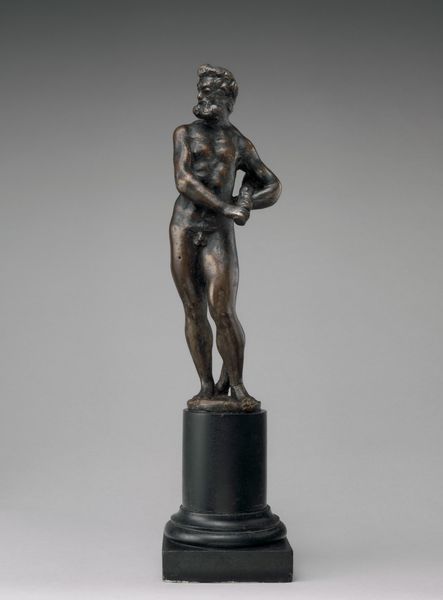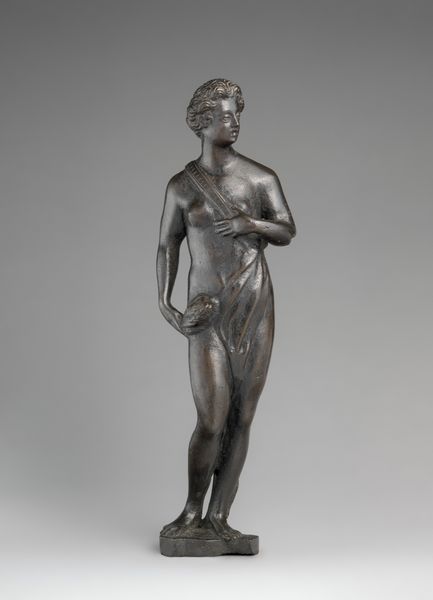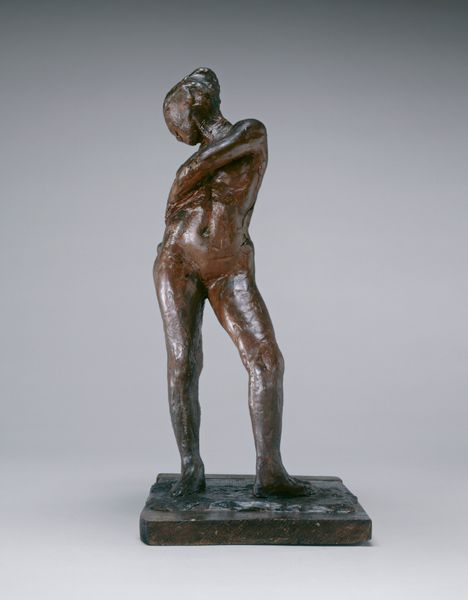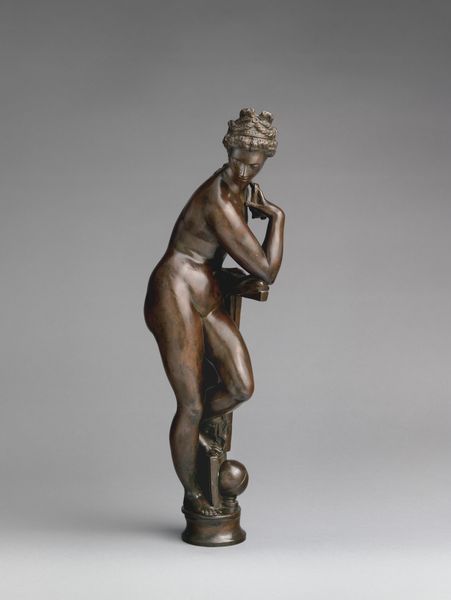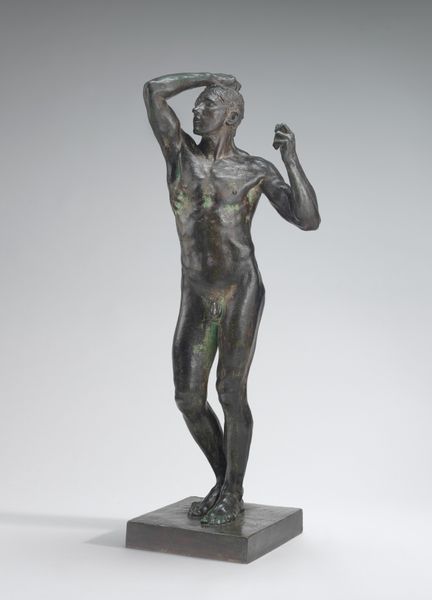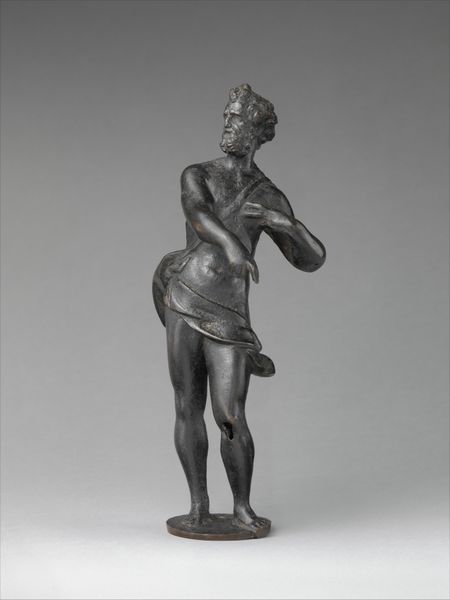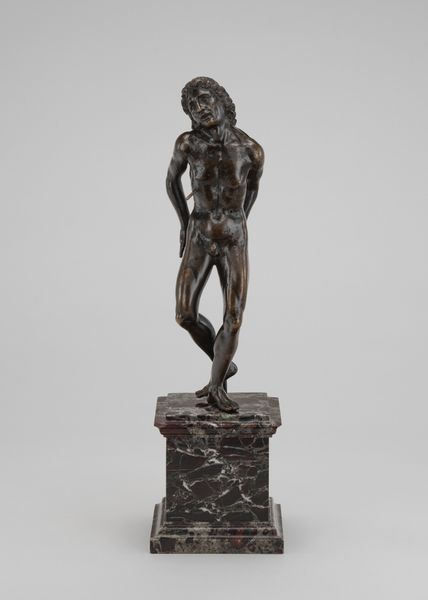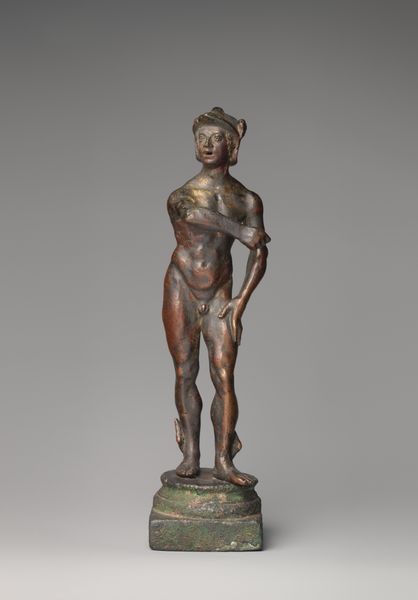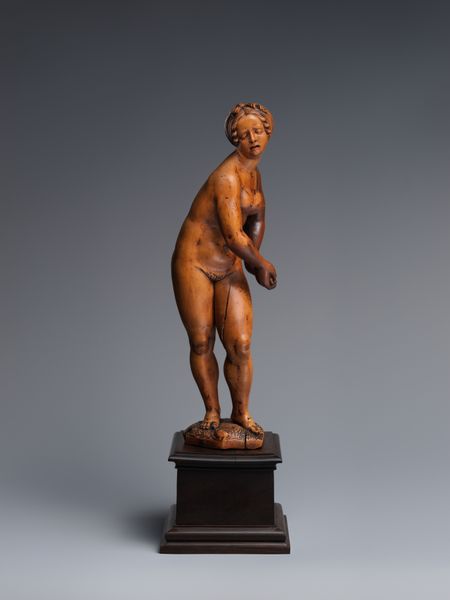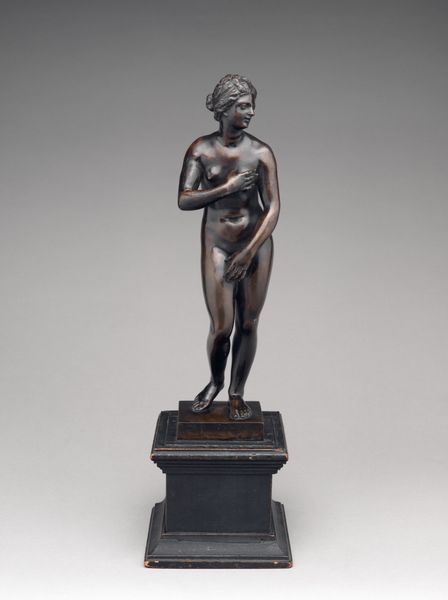
bronze, sculpture
#
sculpture
#
classical-realism
#
bronze
#
figuration
#
sculpture
#
history-painting
#
decorative-art
#
italian-renaissance
#
male-nude
Dimensions: Height: 10 1/2 in. (26.7 cm)
Copyright: Public Domain
Curator: Welcome. Here we have a late 15th-century bronze statuette attributed to Antonio Pollaiuolo, titled "Hercules (?)" It's currently housed at the Metropolitan Museum of Art. Editor: My immediate impression is of carefully worked bronze; you can almost feel the artist coaxing the metal into this sinuous shape. It also looks surprisingly domestic, despite its subject matter. Curator: That's a fair observation. Although identified as Hercules, or perhaps another classical figure, the question mark in the title rightly suggests the ambiguity surrounding the identification. The late 15th century witnessed a resurgence of interest in classical antiquity. How does Pollaiuolo negotiate this interest and his local visual traditions? Editor: I see it in the details, the way he rendered musculature, sure, but look closely—notice the attention given to the patinated bronze, the specific tooling on its surface. It's about the maker and material as much as about antique revival. It makes me think of the artisans laboring away in a Florentine workshop. It emphasizes the artistry of bronze-casting. Curator: It’s clear he wants to invoke a tradition of representing the male nude and to do it with some scientific exactitude. Think about the rising status of artists at this time and their increased ability to portray accurate, observable bodies. We begin to witness a rising awareness of social roles in the arts. Editor: Agreed, and Pollaiuolo was particularly adept at depicting motion and anatomy— his work frequently emphasized strained muscles, active stances. This piece, although more contemplative than overtly action-oriented, still pulses with implied energy; he stands relaxed, ready. Curator: Precisely! It speaks to shifts in artistic practices tied to patronage networks as much as his anatomical realism. The choice of subject, for example, could be tied to a particular commissioner's political or philosophical aims. Renaissance art was deeply entwined with cultural aspirations of its time. Editor: All this makes me ponder how objects like this mediated the cultural currents of the day; each touch to its molten form, each addition to its shape bears significance within its original context. Thank you for highlighting those aspects. Curator: A fascinating perspective, indeed. The interplay between classical idealism, emerging scientific naturalism, and material realities is so vivid.
Comments
No comments
Be the first to comment and join the conversation on the ultimate creative platform.
